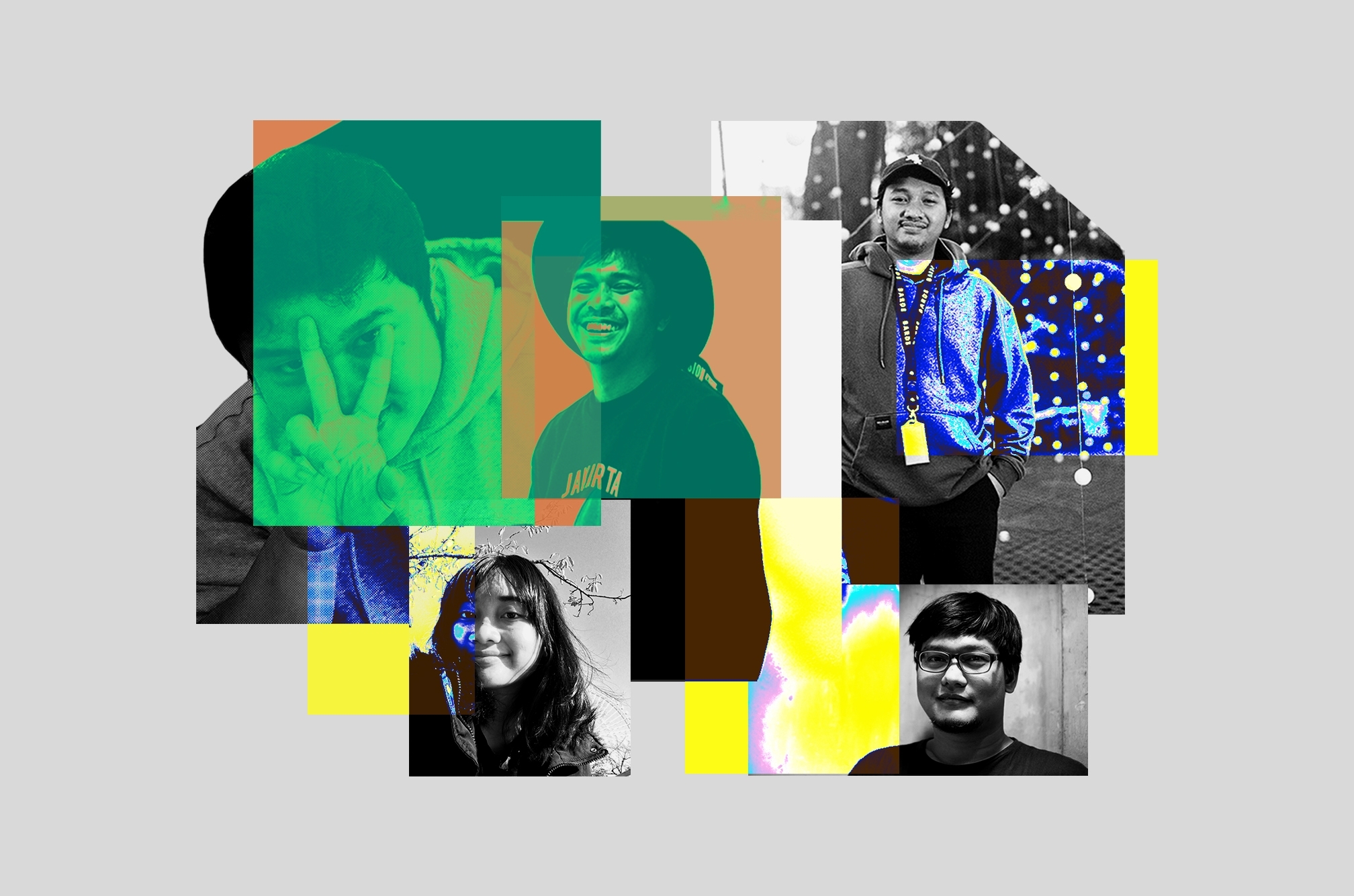 Features
Features
All about the optics: reflections and recollections from visionary mavericks in Jakarta
We take a graphic glimpse into the workings of visual artists from Indonesia’s capital and their distinct ocular aesthetics
At any show (live or online), music is obviously a top factor in hauling in crowds. However, another element weighs in when it comes to attracting viewers; visuals. The synergy of eclectic graphics and images accompanying the performers’ musical compositions entices audiences to take in a sensorial experience for the eyes and ears. Sets from international artists such as Deadmau5 and Eric Prydz can attest to this statement.
In a city as multifaceted as Jakarta, it seems only fitting to see how its visual artists uniquely interpret the kind of music and performance they contribute to. Each with their own distinct background of inspiration and preferences, we ask five visual maestros about their journey in manipulating our senses (and their own) to create their mesmerising animations.
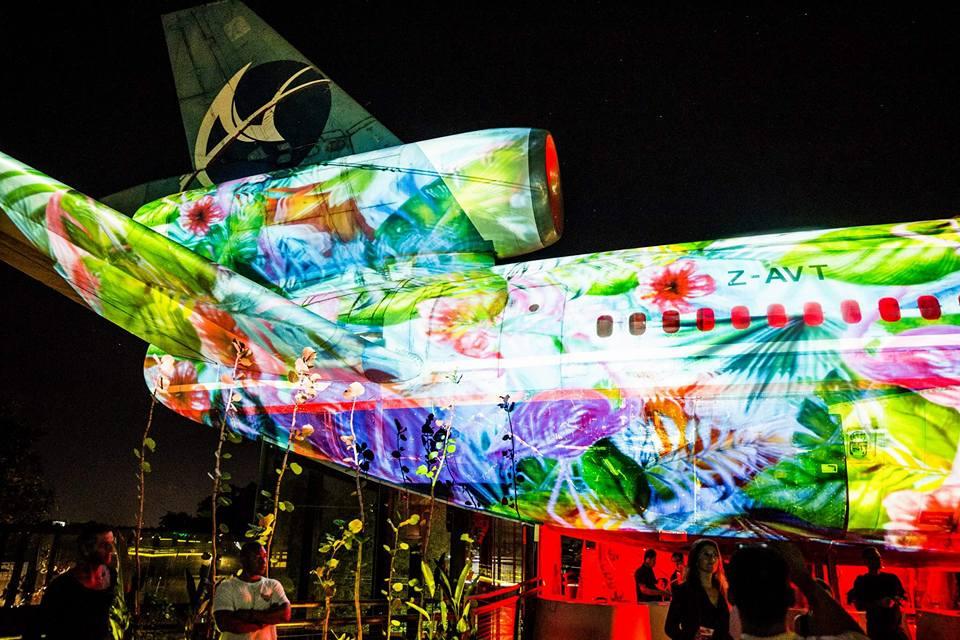
ADI BLAK
Though notorious for its endless traffic jams and sweltering climate, Adi Blak sees Jakarta as the ideal metropolis in Indonesia (so far) for a career in visual arts. “The supply and demand of projects and technology are right at your fingertips. That’s why I still love Jakarta,” he explains. The founder of Vulture Studio, a local commercial multimedia company, praises the city for enabling visual-based creatives to survive.
Having a keenness for drum ‘n’ bass, he recalls his first encounter with electronic music during his high-school days. “This then birthed my interest in visual arts and my pursuit of becoming a VJ.”
He explains that being engaged in the field of visual artistry means being able to communicate with the audience through images, animation, motion graphics and much more. “I’m not one to talk much, so I tend to express myself through my work. All I have to do is create something, and (hopefully) people can see me for who I really am,” says the broadcast design graduate.
When asked who inspires his work, Adi Blak drops the notable names of Sweden’s Eric Prydz and minimal techno extraordinaire Richie Hawtin. “Their sets usually incorporate giant 3D holograms with well-conceptualised visuals.” An icon he looks up to in this field is GMUNK, whose work has been showcased by Prydz himself. Being a 3D enthusiast, Adi Blak usually steers clients towards the direction of applying 3D effects when hiring his expertise.
With a back catalogue brimming with diverse projects, he chooses the one with the most peculiar canvas as his most unforgettable. “I was called out to Bali to do projection mapping for The Gate88; it was a sawn-in-half plane! People could see it from the streets below. Wasn’t easy, though; we had to raise the projector 2,5 metres high and there was nothing to lift it with. We ended up DIY-ing using an abandoned fence nearby.”
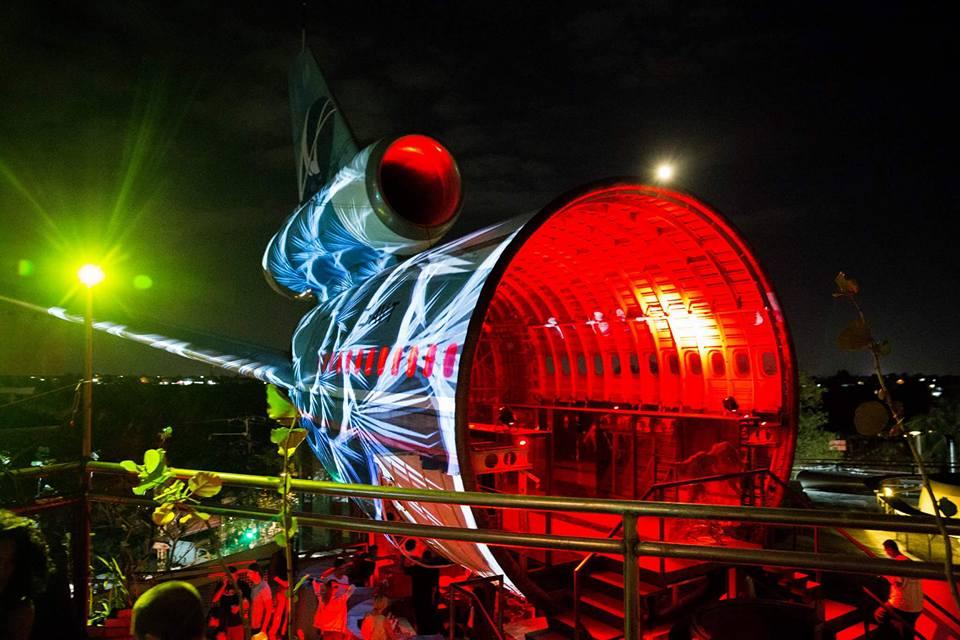
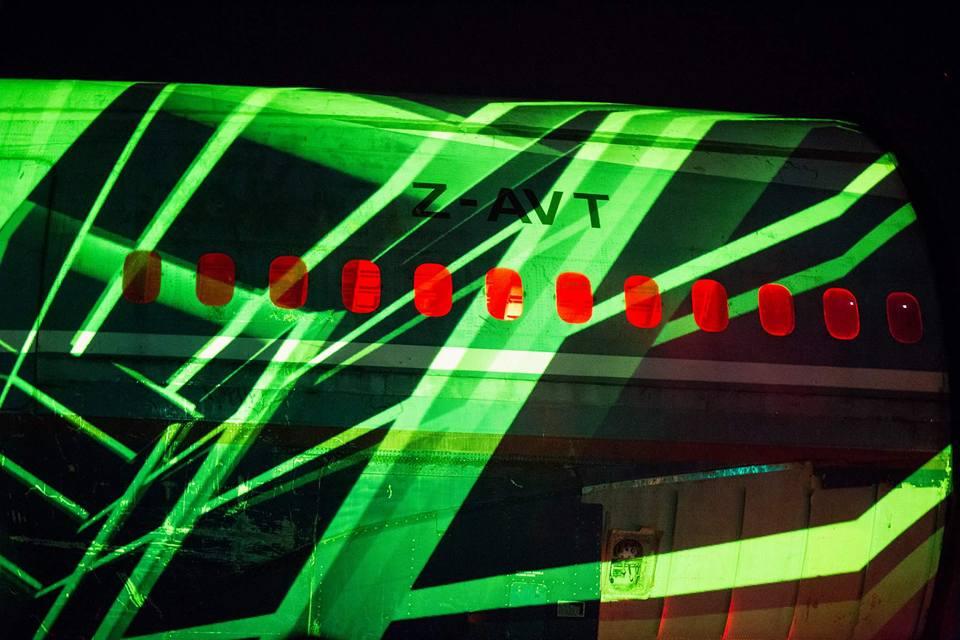
The freedom of creative exploration in live shows is what Adi Blak craves, especially since the pandemic. “Visuals are part of an integrated experience, made up of other elements such as lighting, stage sets, sound design and more. Visuals in particular generate that ‘jaw-dropping’ moment; people from afar can already feel the energy of a performance. At the end of the day, that’s what event organisers expect from us; to give a one-night-only, all-inclusive experience for its audience. For me, visuals are the cherry on top.”
For raves and parties, he creates a more dynamic atmosphere using glowing effects and galvanising colours, whereas theatre-based projects require a more subtle storytelling procedure. “I switch treatment styles according to the venue of the performance, of course. In theatres, people tend to focus on the performance of the actors themselves, so I create visual accompaniment to strengthen the story. However, at clubs or raves, the point is to get people hyped up and create a festive ambience.”
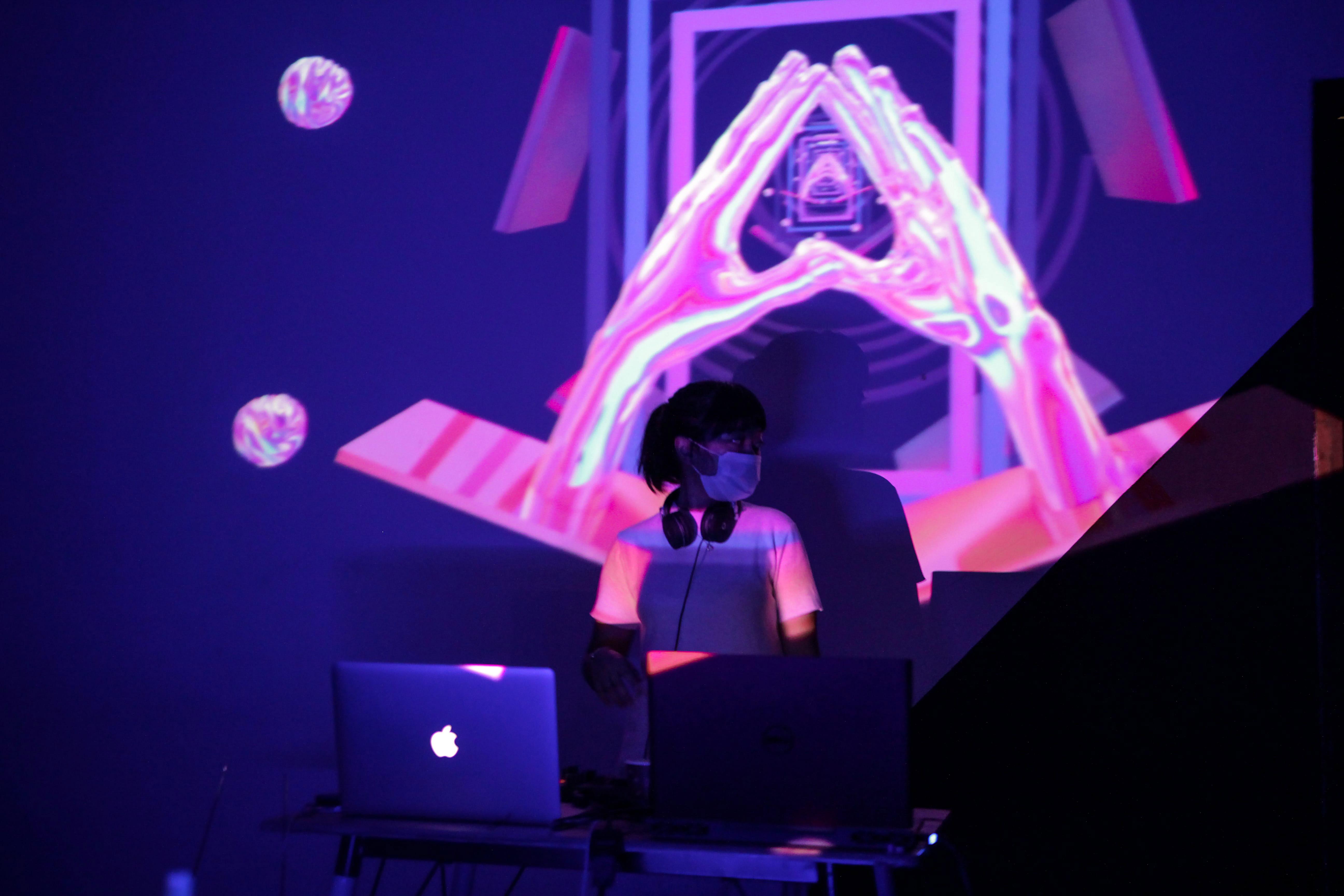
ADXITA
Gina Fitria Adita, known to many by her moniker Adxita, has always had a thing for visual arts. Growing up obsessing over female-powered cartoons such as The Powerpuff Girls, Sailor Moon and Cardcaptor Sakura, she continues to add a ‘woman’s touch’ into her visual creations, complete with a playful vibe. Leaning towards warmer colour palettes such as magenta, purple and fuchsia, Gina shows a brighter side to her preferred genres of tech house and techno.
“The beat and nuance of tech house and techno totally stimulate my senses and give me plenty of ideas,” she explains. Being part of the Jakarta-based SALA collective, Adxita chose showcasing her visuals during their live sets as her favourite experience.
Hard to pick a single performance as her most memorable, Adxita praises the collective for giving her creative freedom. “I also appreciate that they go the extra mile to highlight my visual works. That’s why, the surfaces of our projection mapping are usually quite large, in order to give an immersive visual experience to the audiences,” she adds. It probably also helps that she’s a tech house and techno enthusiast; genres SALA are known to play.
With an academic foundation in visual communication design focusing on multimedia, she was able to dive deep into project mapping mostly for performance art. Pursuing her passion for projection mapping in Yokohama, Japan in 2015, Adxita honed her skills by implementing motion trackers and sensors for an art exhibition and fashion show in Tokyo. She now blesses dance floors across Jakarta with her talent.
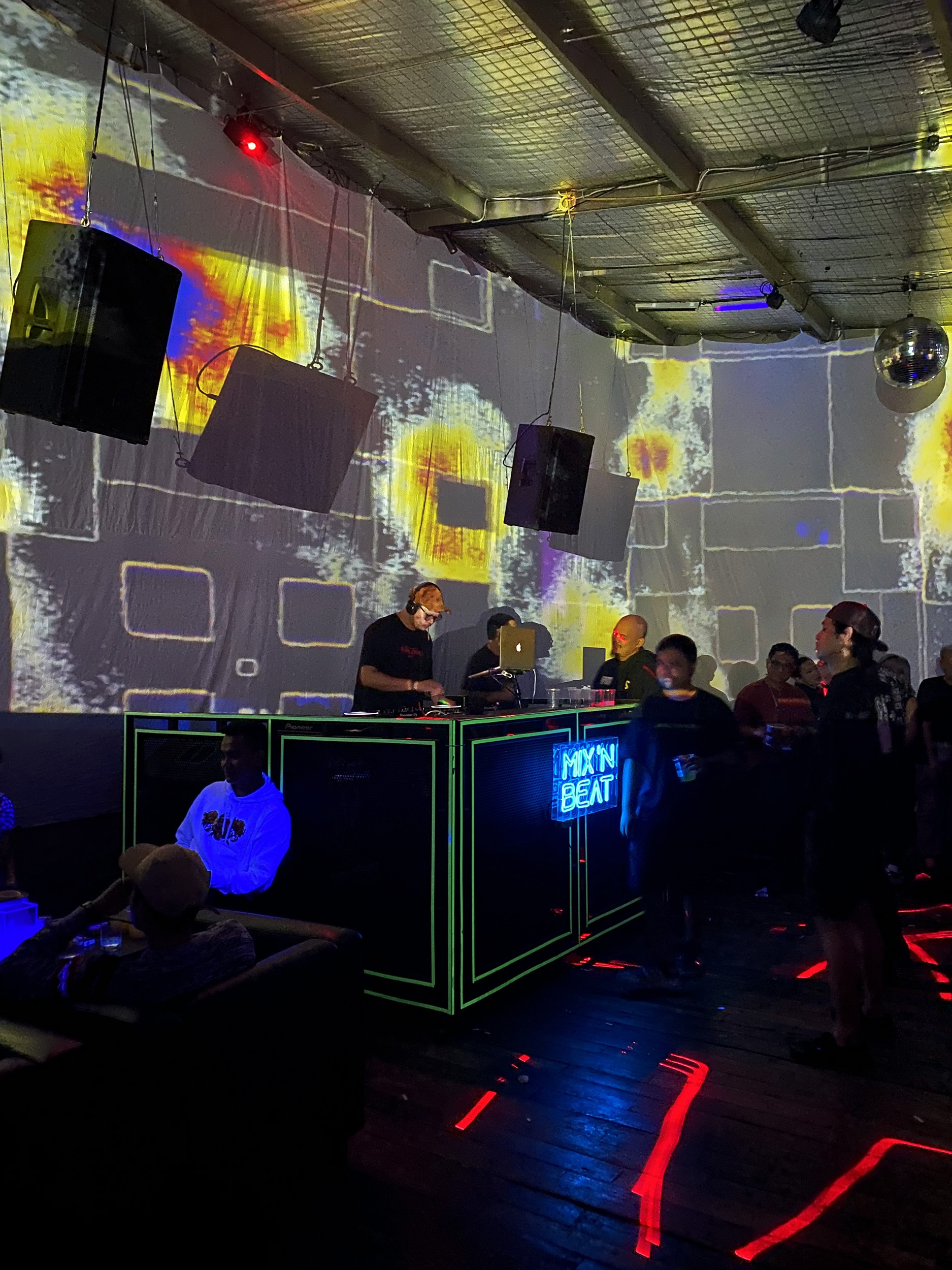
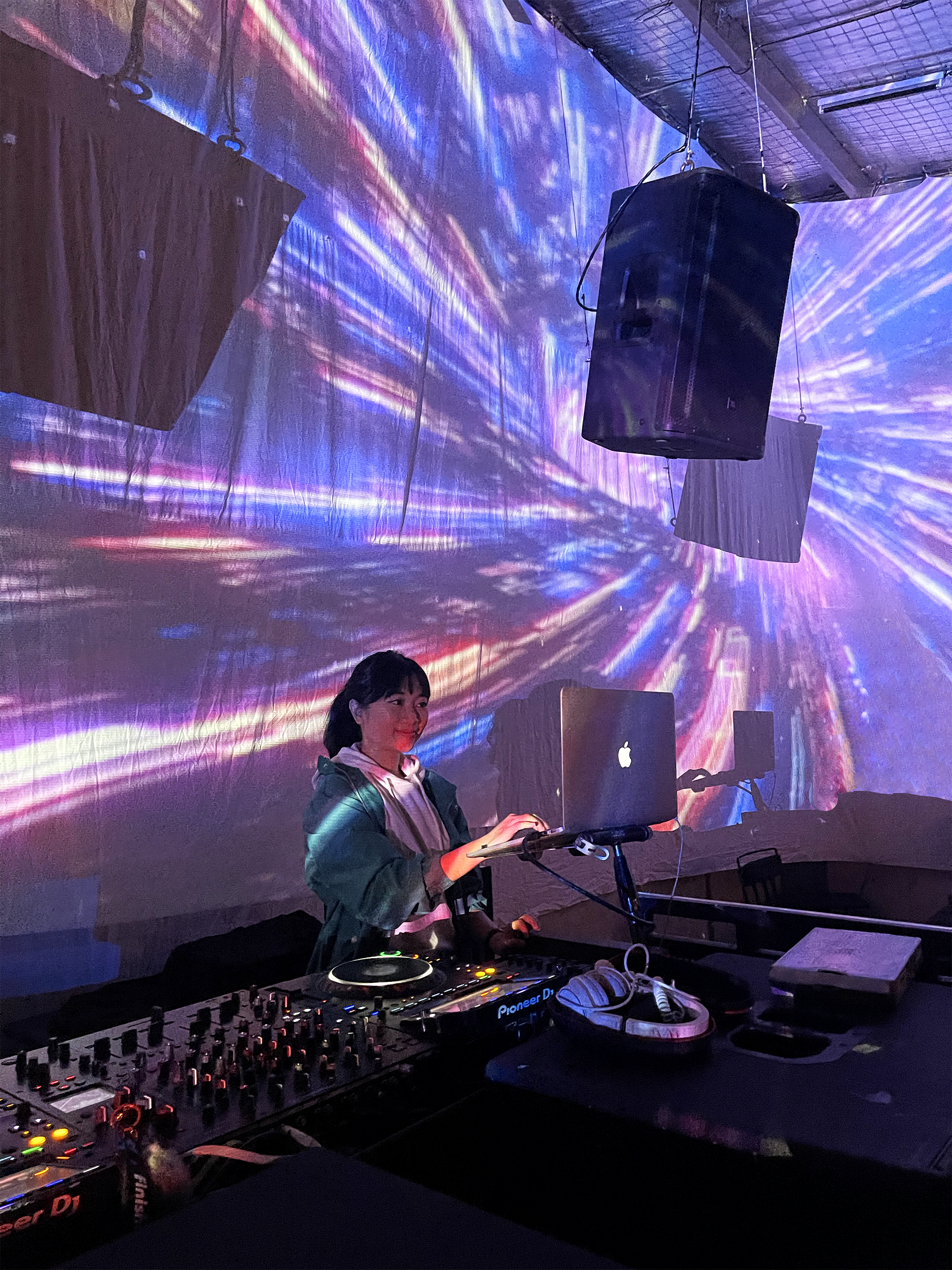
Though varying with each event’s theme, the outline of her artwork usually consists of, subtly or straightforwardly, the ‘woman’s touch’. She explains that not many women dabble in visual artistry in Indonesia, though she sees them as highly intuitive and emotional — both impactful towards creating art. “Through my artwork, I’d like to empower women who aspire to be digital artists and say that there’s definitely a place for you here.”
In her own words, music and visuals are a harmonious collaboration that enhances one another. Visuals without music is a bland experience, and music without visuals tends to become monotonous. In addition to stimulating the senses, the two combined are bound to stimulate various emotions that differ from person to person based on their perspective and experiences. It’s almost impossible for more than one person to experience and feel the same thing during a performance. “After all, that’s what art is all about, right? Isn’t it fun to be able to manipulate emotions and feelings in others through our creative works?” Adxita cheekily mentions.
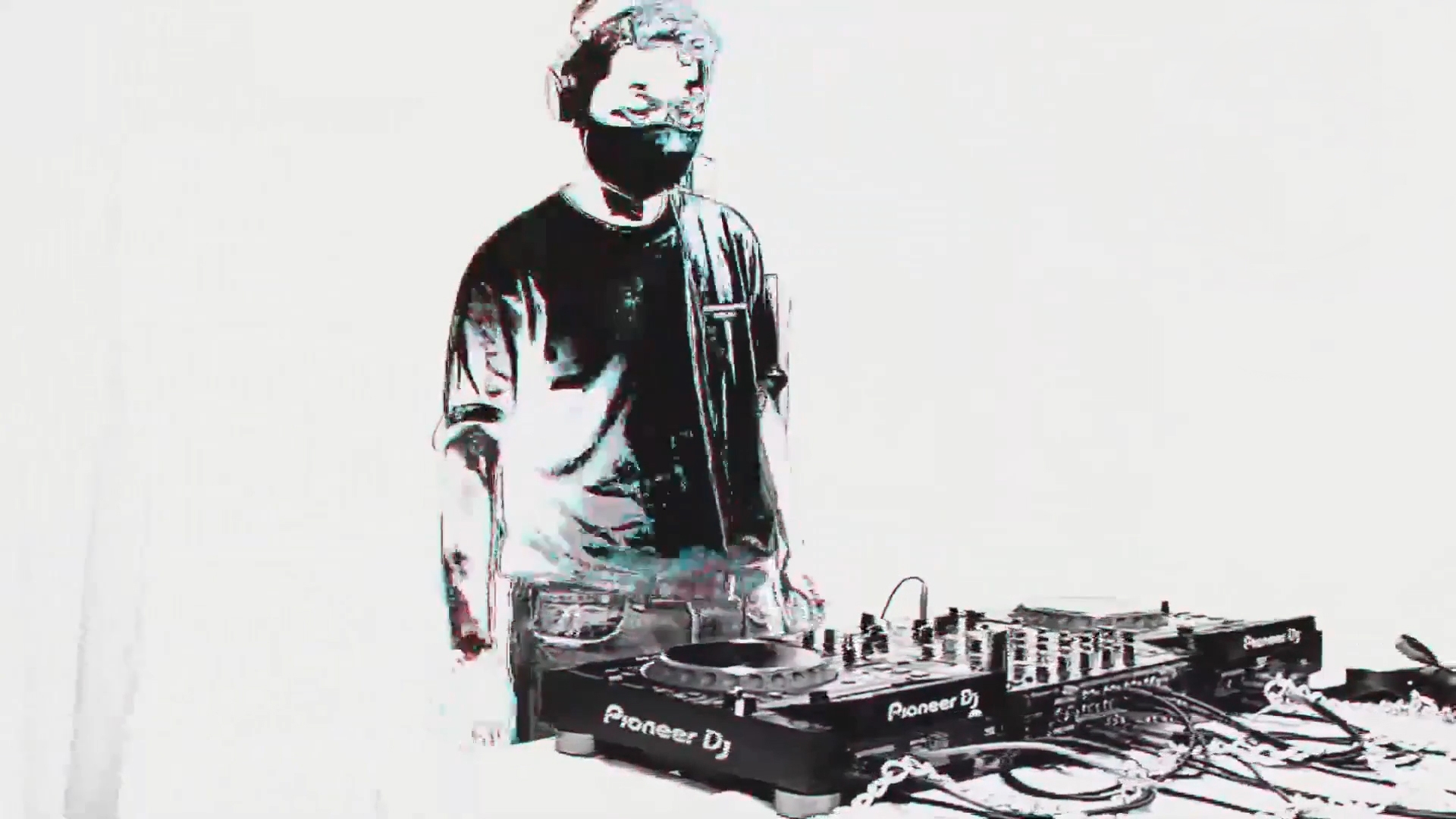
ARMYNAZRIE
Infatuated by Jakarta’s multicultural charm, Armynazrie found inspiration in one of the city’s now-retired clubs — The Safehouse. “I went there for a Dekadenz gig in 2018. That place gave me the first experience of ambiance and music relevant to me.” However, his love for graphics sprouted a couple of years earlier, when Tame Impala mesmerised him as a high schooler in 2016 with their vivid union of music and visuals. “I enjoy visuals more than I do audio, so I won’t feel the euphoria if the audio is presented without visuals,” he adds.
With a style he names ‘Consciousness Delusions’, Armynazrie sways towards displaying a mixture of glitches and reflections in his visual projections. Allowing him to go all-out with his preference, he chooses 2021’s online showcase by local heroes Sunmantra and Dekadenz as his favoured gig. The project was in collaboration with Jakarta-based Moses Sihombing as the director and saw Armynazrie team up with fellow visual artist Azeten.
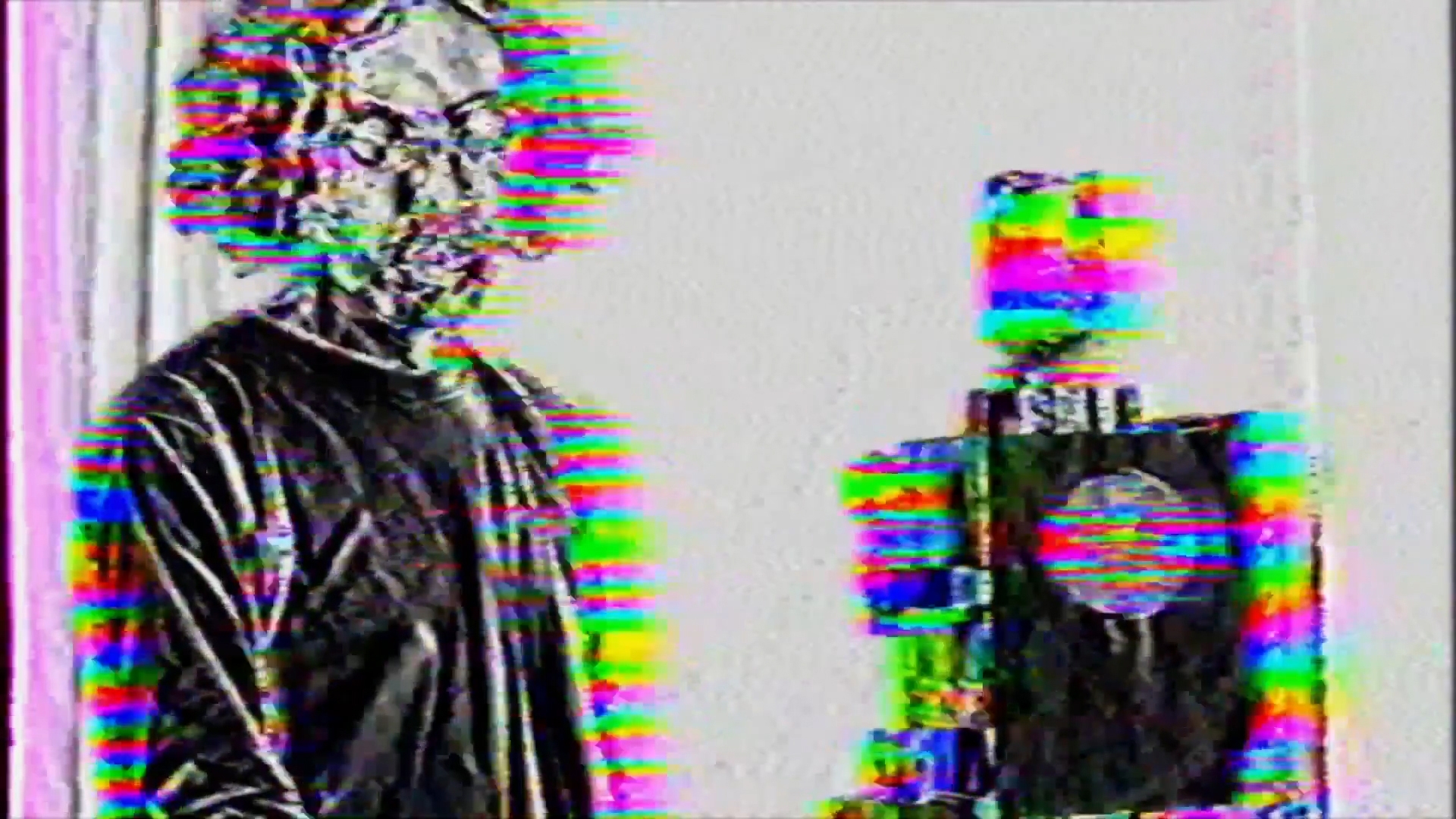
You could say this was his dream gig; an all-in-one package of his preference. The musical performers fuse acid house, deep house, techno and dark disco as a whole, all of which are genres of his choice.
The pandemic has clearly pushed both musical and visual creatives to delve into the digital realm, and as Armynazrie explains, it’s not an easy feat. Coming across an actual glitch that almost messed up the three-hour live session video, he and the team spent hours trying to find the slipup. “I found an unexpected sound in the Sunmantra visual set; one that definitely didn’t come from any instrument they were using. The editing experience was honestly pretty fun, but yes, it was a struggle to synchronize the visuals and music.”
Now back to the visuals themselves. Armynazrie chose an array of vibrant colours to bring the three individual sets of the showcase together. He values how they stun from the screen and light up the audience’s point of view — something a lot of us were craving last year while stuck at home due to COVID-19 restrictions. “I was hoping to deliver my personal vision of ‘Consciousness Delusion’, to make people experience what I see.” Throughout the set, we can definitely see how he’s influenced by his idols, Jonathan Zawada and Zak Norman aka Black Box Echo.
Watch Armynazrie’s collaborative set in its entirety below.
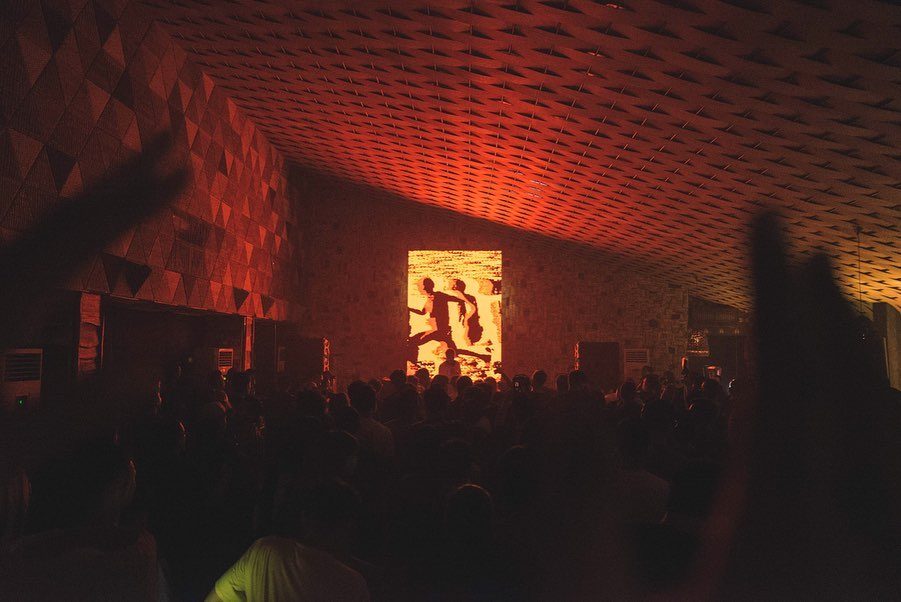
[Image: Moses Sihombing]
AZETEN
Finding inspiration in the hustle and bustle of Jakarta’s urban lifestyle, Azeten is able to create a blend of unique elements and form them into solid content, pleasing to the eyes. He himself has been whirlpooled into the heterogeneity of the big city; he was immersed in the world of emo music before embarking on a more electronically-inclined lifestyle through his art. “All genres are worth listening to, and as a visual artist, you’ve got to adapt to any you’re presented with,” the former band kid exclaims.
His next stop; graffiti. Azeten, known also as Alif, developed his love for visuals by first becoming a graffiti writer where he honed his skills as an autodidact. This phase empowered him to represent his crew and self to a real audience on the streets. This led him to explore the world of graphic design and illustration before finally focusing on motion design.
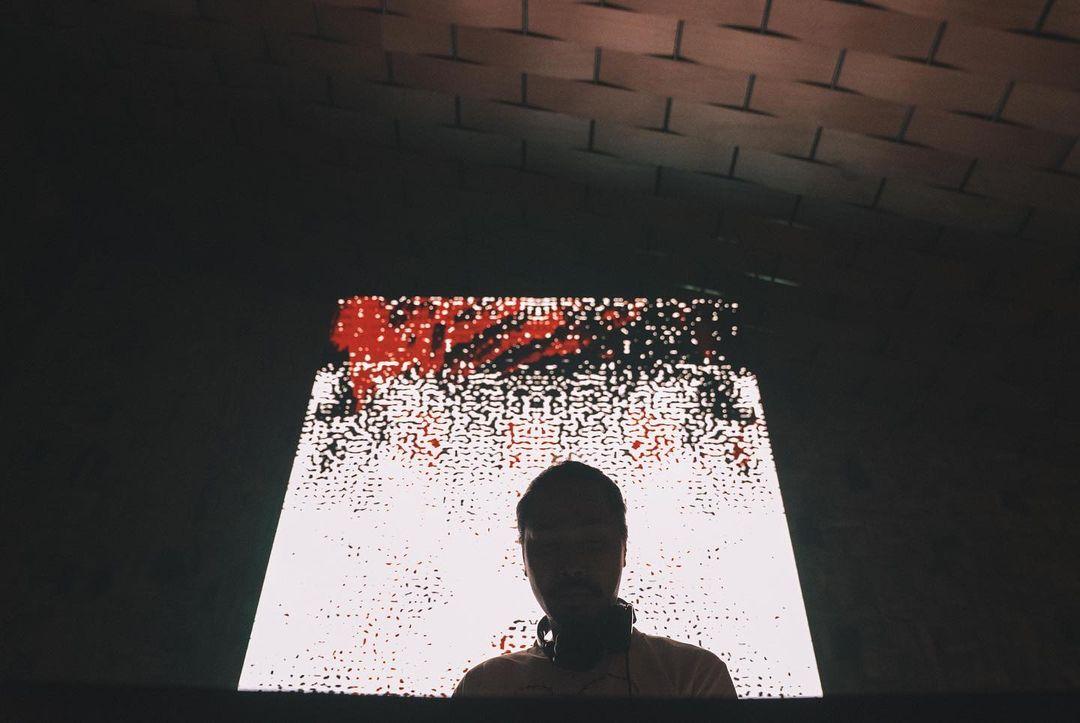
[Image: Moses Sihombing]
Expect to encounter a rough, raw, grungy and experimental style of presenting visuals when Azeten’s on board. Lots of oranges, purples, greys, reds and blues will fill the darker backgrounds on screens.
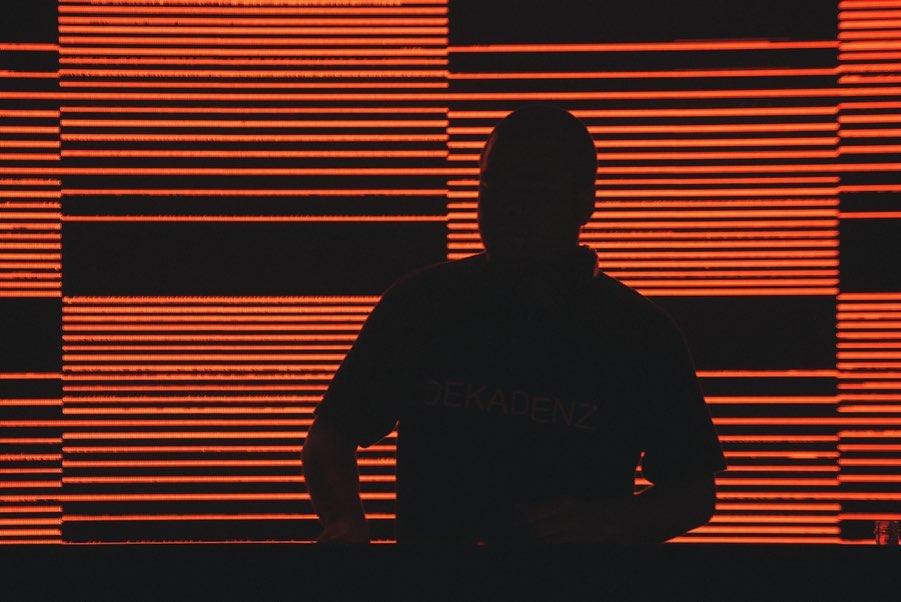
[Image: Moses Sihombing]
Azeten’s most memorable sets to produce were for the homegrown electronic talents of Dekadenz, Dipha Barus and the post-black metal/shoegaze band Avhath. “They gave me total trust for experimenting with the visuals, which made me able to give my 100%.” Though differing genre-wise, this came as no problem for him who’s used to genre-hopping, anyway.
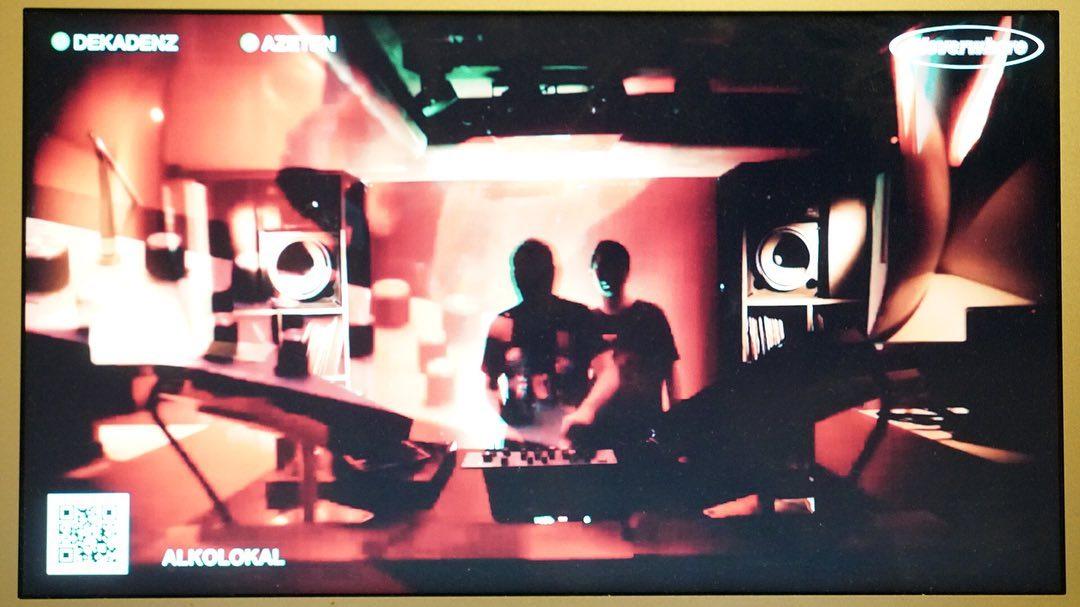
Without restriction, Azeten upholds the notion of “Portraying what I personally feel and hear through the magic of After Effects and Blender into moving visuals. I don’t really know why I choose the styles I do for the sets! The message I convey through them would be… Enjoy the trip?!” he laughs. Coming across mishaps here and there, he brushes them off and regards them as spices of life. “Like when tipsy audience members want to fiddle with my setup!”
So how exactly does Azeten interpret the experience of visuals and performances as a whole? “Seeing is believing, and when the music is in sync with the visuals, it just adds to the euphoria of the whole set! It also brings together the whole audience in visualising the music as a collective experience.”
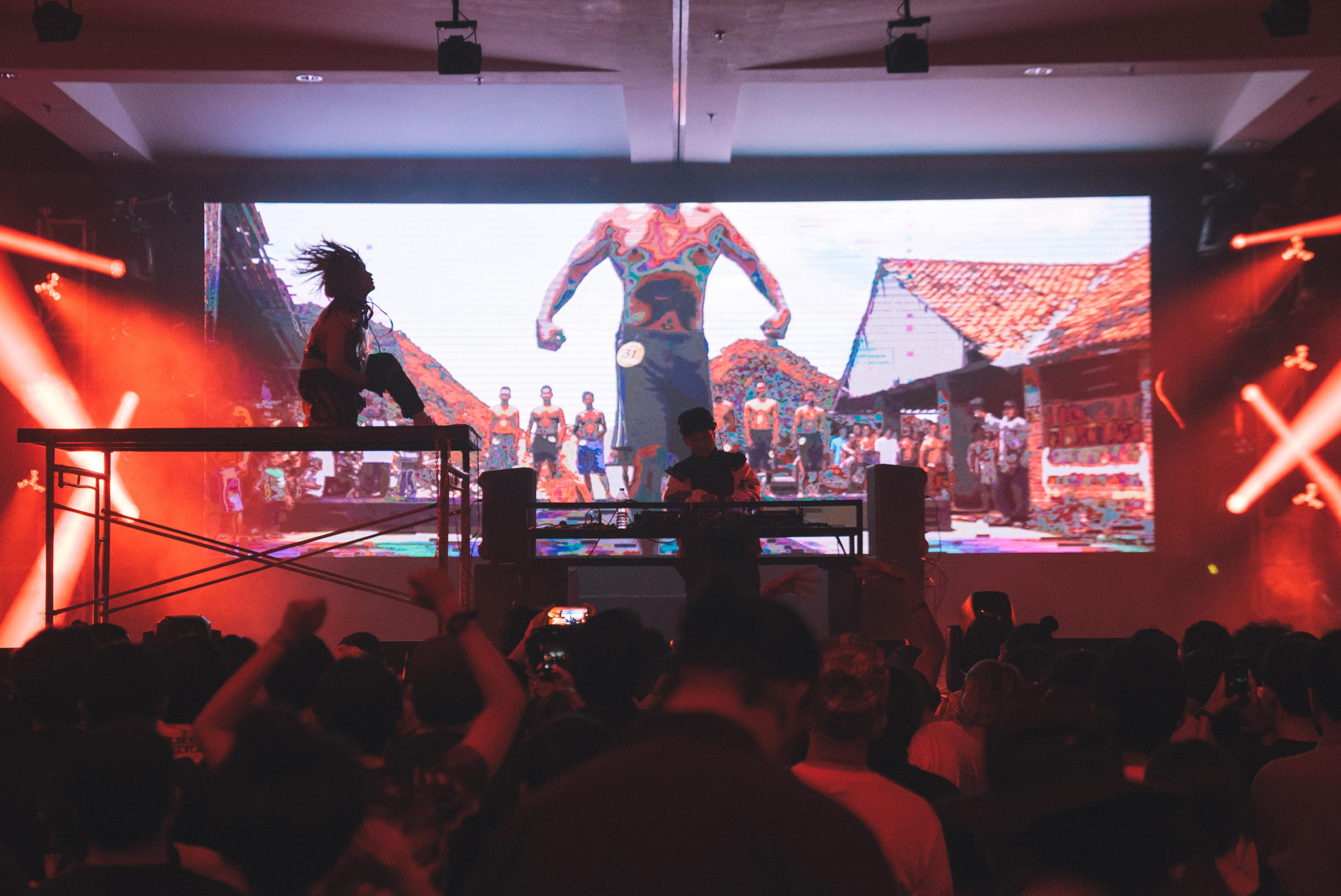
[Image: Moses Sihombing]
RIMBAWAN GERILYA
“Being playful is serious business,” mentions Rimbawan Gerilya (Indonesian for “guerilla forester”) when asked about his profession. Majoring in visual communication, he then got drawn into the psychological aspects of visual design. His first promotional logo was a cartoon-faced tribal warrior, evoking primitive emotions while hinting that those emotions are purely artificial and therefore only meant for entertainment.
He describes his artwork as mostly sweet and colourful but with a darker, deeper undertone. “I like to highlight the value and dignity between different cultures to inspire mutual respect and open-mindedness. My creative goal is to try to come up with novel little things that are memorable. Nothing fancy, just unique enough to be interesting while serving its visual purpose, like hinting at an idea or just as plain decoration.”
Rimbawan Gerilya’s style of visuals leans towards “Finding the elusive intersection between the fresh shiny thing and the familiar that feels somewhat deep-rooted in culture.” His visuals derive energy from his mood when listening to tracks such as ‘Duppy Man’ by Chase and Status featuring Capleton. “Their sound reminds me of Jakarta's streets; unrelenting, loud, and aggro. Capleton sounds like the old Metromini bus conductor shouting at commuters."
He compliments drum ‘n’ bass and jungle as major influences that roped him into visual artistry. Their fast syncopated beats and common occurrence of chopped Amen Breaks resonate well with Indonesians since most traditional Indonesian rhythms are not 4/4. Not one to restrict inspiration, Rimbawan Gerilya underlines that “ambient music with zero percussive instruments could just as easily fuel my creative process.”
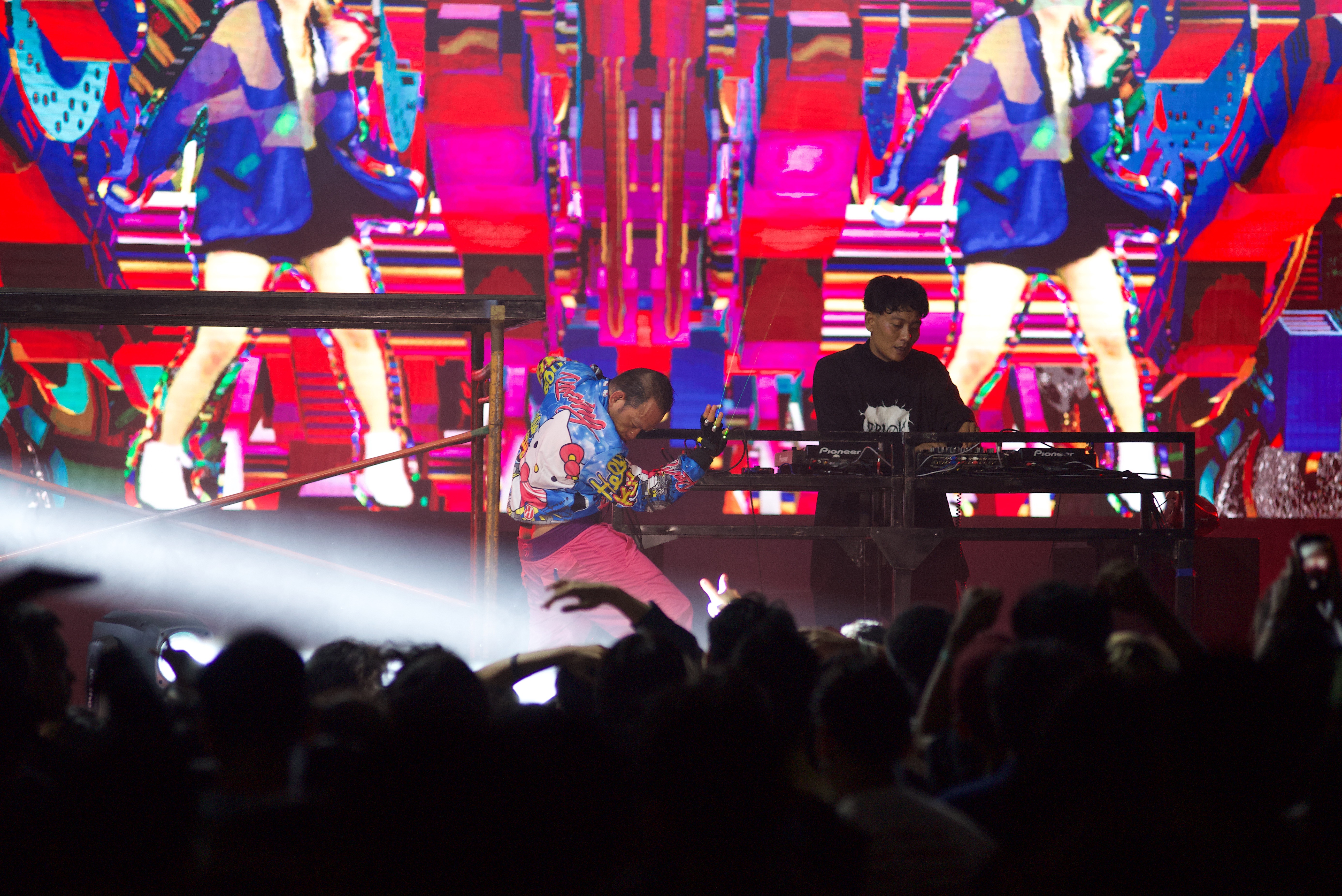
[Image: Nala Satmowi]
His most notable gig was one with Gabber Modus Operandi (GMO). “When Rimbawan Gerilya was first formed in the underground drum ‘n’ bass scene, Kasimyn from GMO was part of the Rimbawan Gerilya family. We've always had a soft spot for diversity in music and thought of ‘localising’ drum ‘n’ bass because so many parts of that subculture resonate well with ours.” GMO’s complementary mash-up of footwork, juke and gabber with local sounds goes in line with the visual artist’s liking of an organic fusion between global subcultures.
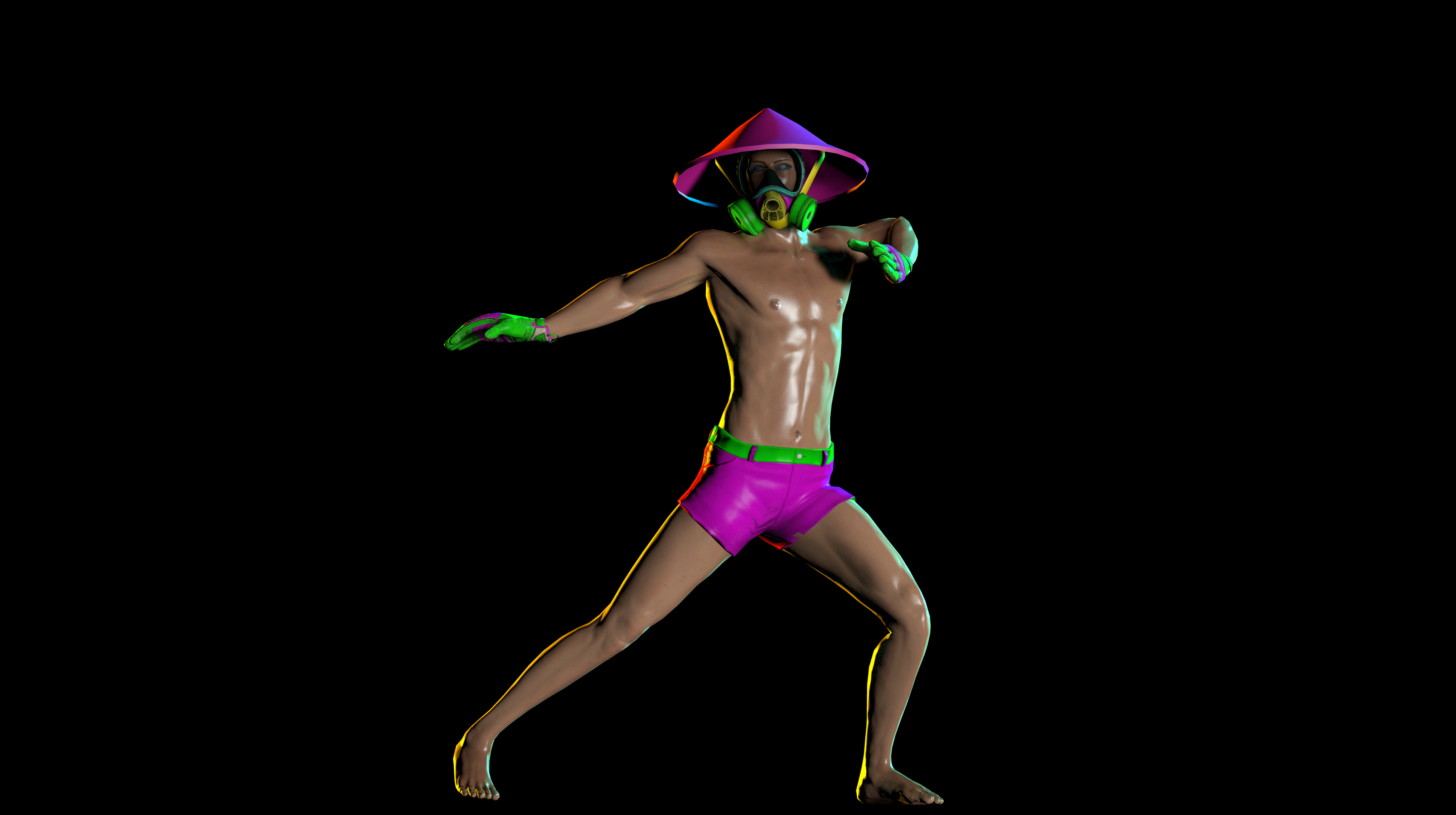
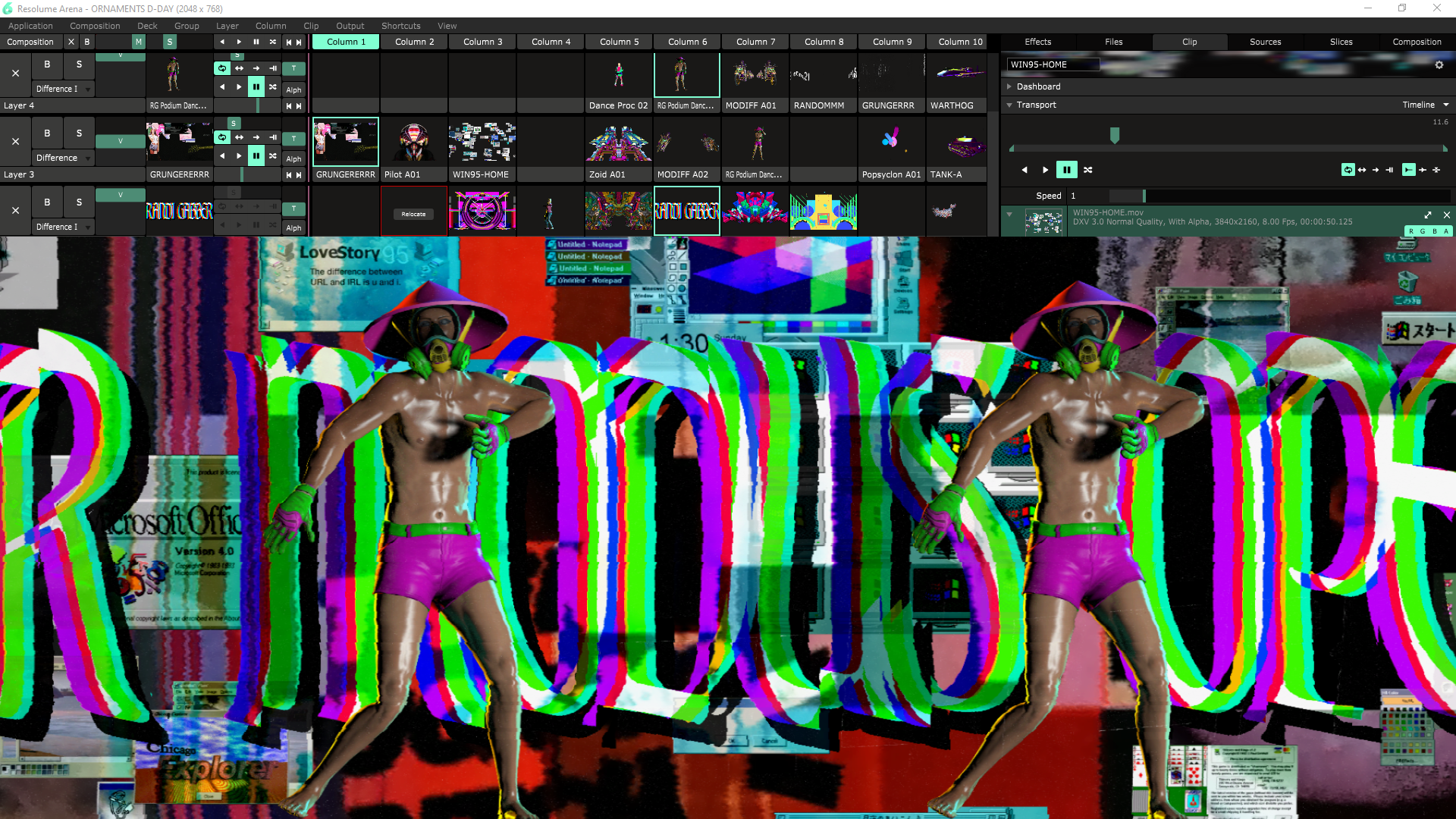
Though finding the right visual language to represent the spirit of GMO wasn't hard, Rimbawan Gerilya fought to make it memorable. “I have this theory that audience responds well to visuals they're familiar with, but with a twist. I created an unofficial mascot that looks like a crossover between a techno podium dancer and a traditional labourer wearing the ‘caping’ straw hat that might remind Indonesians of Romusha-forced labour during the Japanese occupation.”
In addition to persuading the audience to dance, he also projected this as a symbol of the freedom we have by overcoming the inferior mentality inherited from colonialism. Though not explicitly communicated, this added layer of meaning subconsciously adds gravitas to the visual. “To make this mascot I needed to learn 3D character animation, which I have been avoiding because of how time-consuming it is. But I was glad I did because it opened up a whole new visual vocabulary that led to another project with GMO; the Mbeledoss video mixtape.”
Amira Waworuntu is Mixmag Asia’s Editorial Assistant, follow her on Instagram.


